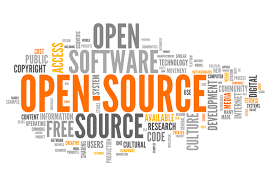- Understanding Open Source Licensing
- The Role of Licenses in Open Source
- Governance Challenges in Linux Projects
- Decision-Making Structures
- Compliance and Legal Considerations
- The Community’s Role in Governance
- The Future of Open Source Governance
- Conclusion
Understanding Open Source Licensing
Open source software has transformed the technology landscape, fostering collaboration and innovation. At its core, open source refers to software that is made available for anyone to use, modify, and distribute. However, this openness is governed by various licenses that delineate how the software can be used and shared. In the realm of Linux projects, understanding these licenses and their implications is crucial for developers, organizations, and users alike.
The Role of Licenses in Open Source
Licenses serve several critical functions in open source projects. They protect the rights of creators while allowing users to benefit from the software. There are several types of licenses, including permissive licenses (like MIT and Apache) and copyleft licenses (like GNU GPL). Each type has its own requirements regarding distribution, modification, and attribution.
Permissive licenses allow for greater flexibility, permitting users to incorporate the code into proprietary software without stringent requirements. In contrast, copyleft licenses ensure that any derivative work also remains open source, thereby preserving the original project’s spirit of collaboration. Understanding these differences is key to navigating open source projects effectively.
Governance Challenges in Linux Projects
While the open source model thrives on collaboration, it faces inherent governance challenges. One notable issue is the fragmentation of projects. With multiple contributors working on various aspects of a Linux project, decision-making can become complex. Different interpretations of licenses can lead to disputes over compliance and can even result in forks—where the original project is split into separate paths. These forks can dilute efforts and resources, making coordination essential.
Decision-Making Structures
Effective governance structures help to mitigate fragmentation and streamline decision-making. Many Linux projects adopt a meritocratic approach, where contributions dictate influence over project direction. However, implementing this model requires clear guidelines and transparency to maintain trust among contributors.
Additionally, the role of benevolent dictators or advisory boards can guide projects by providing vision while allowing for community input. These governance models play a critical role in fostering an inclusive environment and ensuring compliance with licensing agreements.
Compliance and Legal Considerations
Compliance with open source licenses is vital for maintaining the integrity of Linux projects. Organizations that incorporate open source software into their products must have mechanisms in place to ensure adherence to licensing terms. This involves regular audits and legal reviews to identify any potential violations.
The consequences of non-compliance can be severe, including legal action and reputational damage. Therefore, organizations using or contributing to Linux projects must understand the legal implications of the licenses involved and take proactive steps to ensure compliance throughout the software development lifecycle.
The Community’s Role in Governance
The success of open source projects, particularly in the Linux ecosystem, relies heavily on community involvement. Collaboration fosters innovation, but it also necessitates a shared understanding of governance and licensing. Communities need to engage in open discussions about resource allocation, conflict resolution, and license interpretation to ensure a unified approach.
Encouraging contributors to familiarize themselves with relevant licenses is equally important. This knowledge empowers developers to create compliant software, helping to uphold the integrity of the Linux projects they support.
The Future of Open Source Governance
As open source software continues to gain popularity, the governance of Linux projects will likely evolve. The increasing complexity of software systems may necessitate more sophisticated governance models that adapt to new challenges such as cybersecurity and intellectual property rights.
In addition, the rise of automated tools for compliance checking and licensing analysis will play a vital role in simplifying adherence to open source licenses. These developments will contribute to a more robust framework for managing open source projects, ensuring that they remain dynamic and innovative.
Conclusion
Open source licensing and governance issues are critical components of the Linux project landscape. Understanding the nuances of different licenses, implementing effective governance structures, and prioritizing compliance are essential for fostering a thriving open source community. As the landscape continues to evolve, embracing collaborative problem-solving and transparent governance will ensure that Linux projects remain at the forefront of technological advancement. The journey toward effective open source governance requires concerted effort but can ultimately lead to a more inclusive and innovative software ecosystem.
